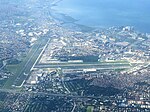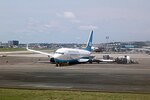Mahatma Gandhi International School, Pasay
Indian international schoolsInternational Baccalaureate schools in the PhilippinesInternational schools in Metro ManilaSchools in Pasay

The Mahatma Gandhi International School is a private international school located in Pasay, adjacent to Merville Park subdivision, Metro Manila, Philippines. Established in 2002, the school offers the International Baccalaureate Diploma Programme and the International General Certificate of Secondary Education for students from Kindergarten to Grade 12.
Excerpt from the Wikipedia article Mahatma Gandhi International School, Pasay (License: CC BY-SA 3.0, Authors, Images).Mahatma Gandhi International School, Pasay
Moonwalk Access Road, Pasay Zone 20 (District 1)
Geographical coordinates (GPS) Address Nearby Places Show on map
Geographical coordinates (GPS)
| Latitude | Longitude |
|---|---|
| N 14.50607 ° | E 121.02666 ° |
Address
Mahatma Gandhi International School
Moonwalk Access Road
1709 Pasay, Zone 20 (District 1)
Philippines
Open on Google Maps









